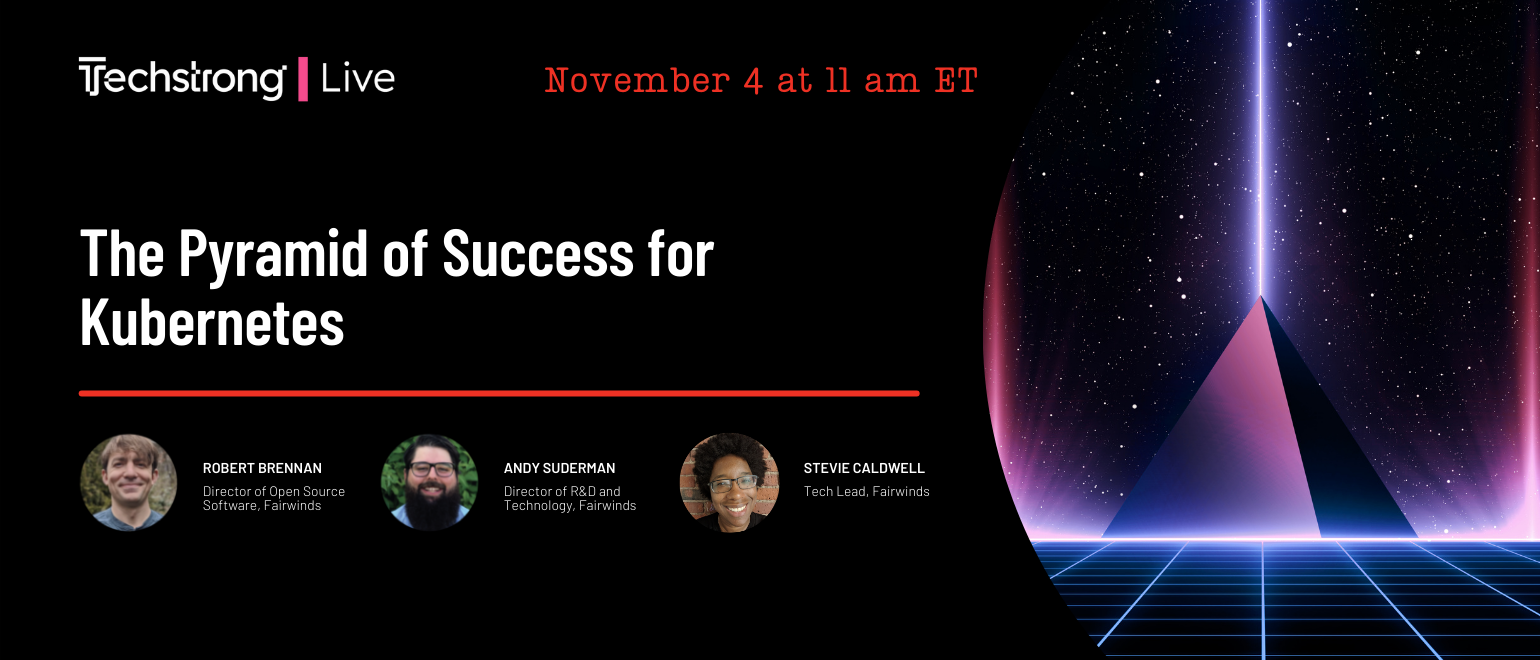Webinar
Think About Your Audience Before Choosing a Webinar Title

Sponsored by fairwinds
What You’ll Learn in This Webinar
Did you know that 87% of organizations are now managing some portion of their container workloads using Kubernetes? Here's how you can learn to find success, not struggle.
The Pyramid of Success was first developed to help basketball players reach their potential on and off the court, but it can offer a useful framework for finding greater achievement in any area. The same model applies well to Kubernetes, as it allows for more secure and effective operations. The pyramid framework is intended to outline the basic elements needed to build out more advanced capabilities, leading to the achievement of competitive greatness. For users of Kubernetes, the three basic elements for success are:
* Security
* Policy
* Governance
In this webinar, Robert Brennan, Director of Open Source, and Andy Suderman, Director of R&D and Technology at Fairwinds, will break down the importance of each element in the pyramid and how each builds on another to create highly-functional and ultimately successful Kubernetes ownership. Listeners will hear more about how to:
- Address potential risks in your cluster and what it takes to secure sensitive workloads.
- Find visibility and ensure consistency of multiple clusters to enforce compliance and reduce risk.
- Establish reliability guardrails and learn how to automate, monitor and enforce them
Listen in and learn how this model for success can help you prevent mistakes, improve security, optimize cost and save time. Gain peace of mind knowing your organization is doing Kubernetes right!







